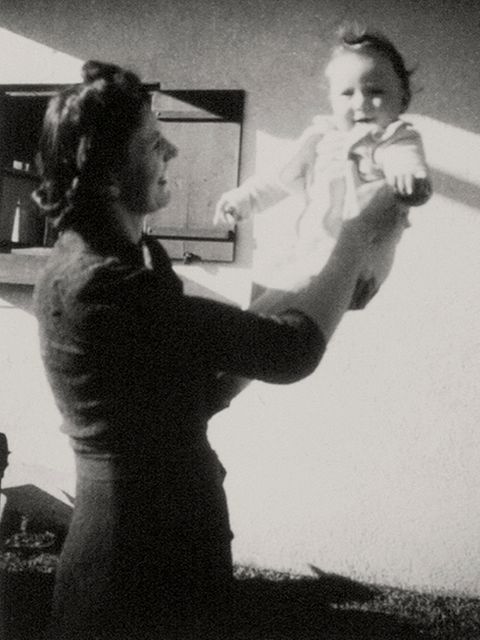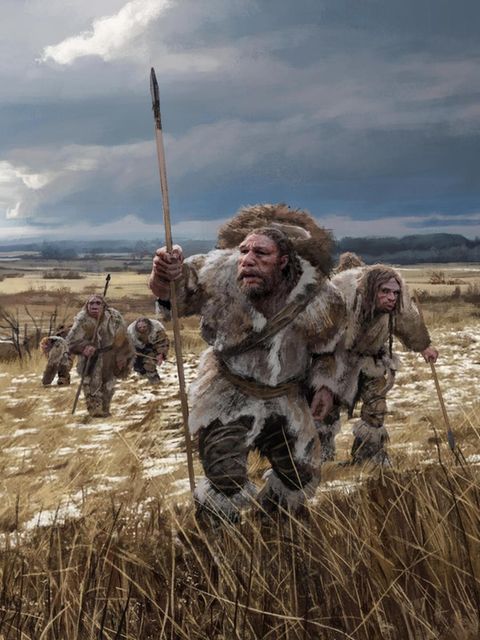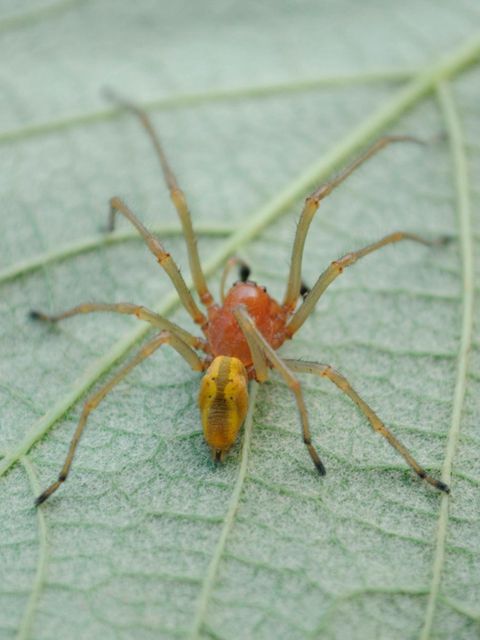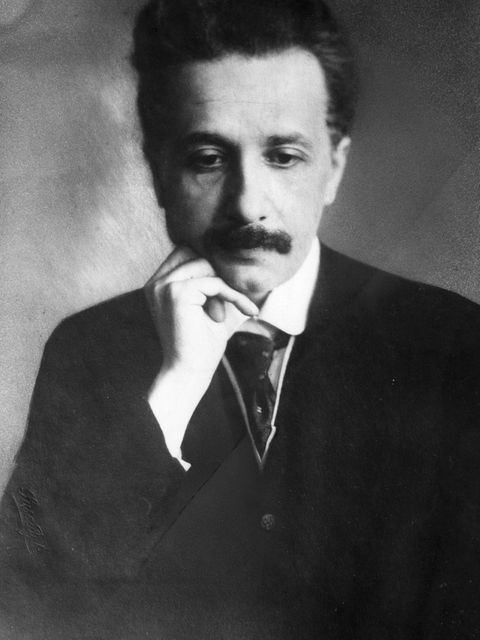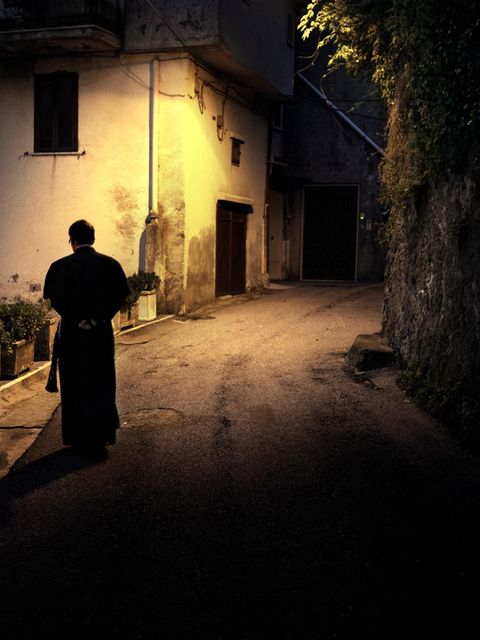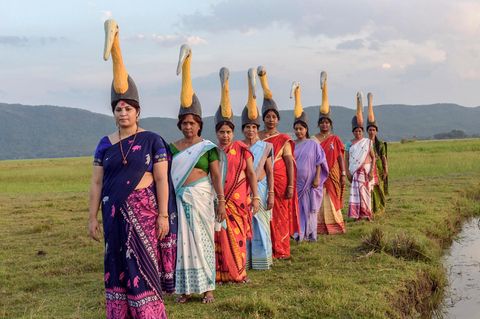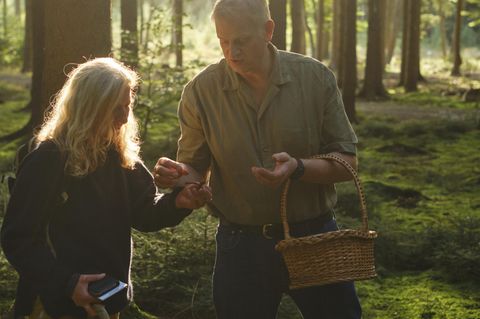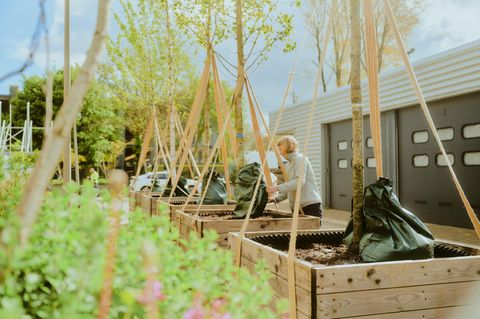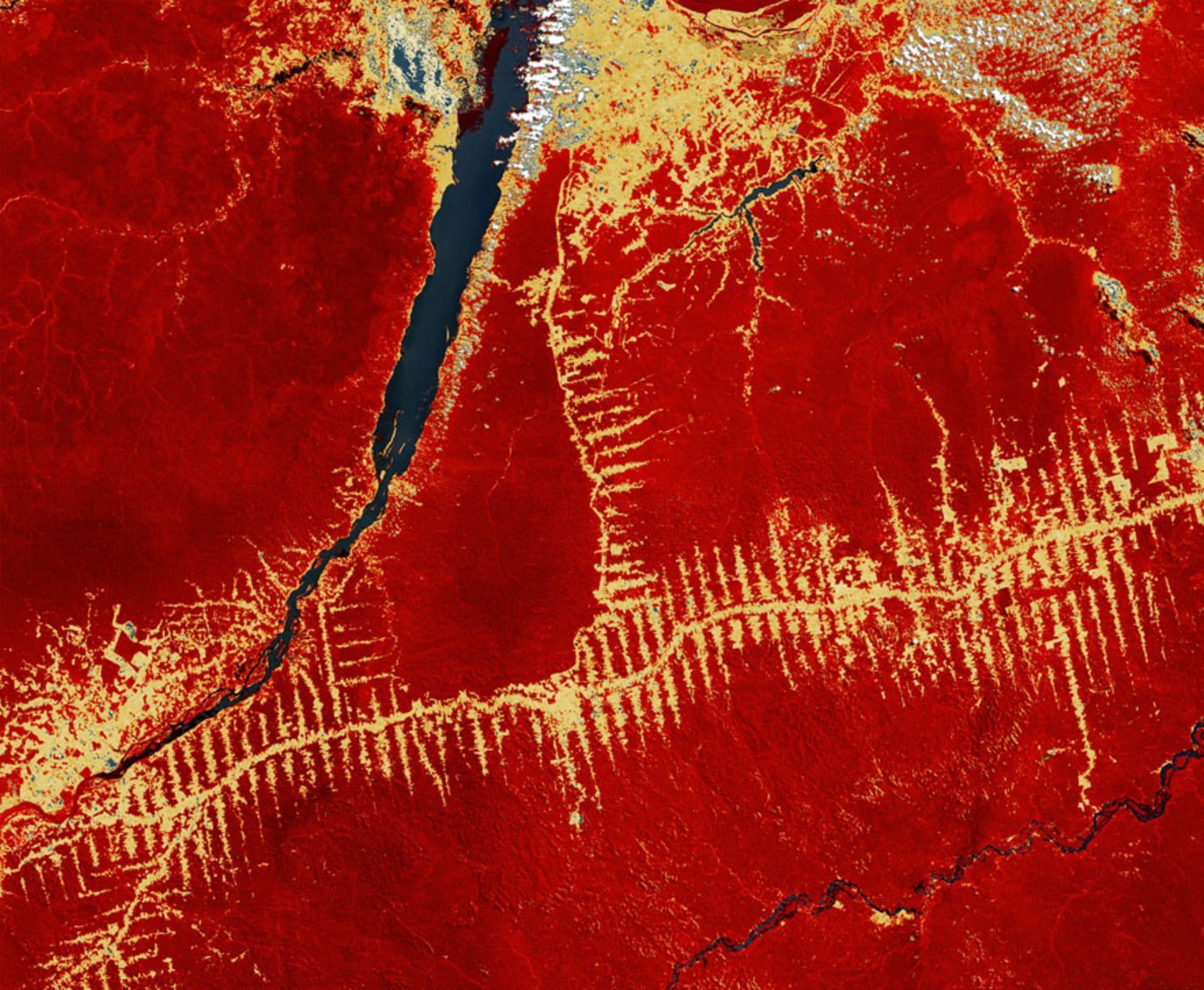
Brazilian scars
Es ist nicht nur eine Spur, sondern eine Narbe, die von Menschen erschaffen wurde. Das Bild zeigt einen tiefen, 350 km langen Einschnitt im brasilianischen Regenwald, der durch massive Abholzung geschaffen wurde. Das Gebiet befindet sich in der Nähe der Stadt Santarém und des Flusses Rio Tapajós. Die goldenen Linien und Punkte markieren Städte, Straßen und abgeholzte Felder und zeigen den zerstörerischen Einfluss des Menschen auf den Regenwald. Der Flussnebenarm windet sich schlangenartig durch den Regenwald und zeigt den Kontrast zwischen Mensch und Natur. Die Siedlungen sind strukturiert, gerade und ohne Rücksicht gebaut. Kommerzielles Abholzen, Sojabohnen-Produktion, Ackerbau und Rinderhaltung sind die Hauptgründe warum der Regenwald abgeholzt wird. Die Konsequenzen dieser Aktionen sind unter anderem der Verlust von Artenvielfalt, das Aussterben von Tieren und Pflanzen, ein CO2-Anstieg in der Atmosphäre sowie Erderosion.
It's not a trace - it's a scar. The picture shows a deep, 350 km-long gash in the Brazilian
rainforest resulting from the enormous deforestation close to the city Santarém and the river Rio Tapajós which can even be seen from space. The golden lines and plots are marking cities, roads and deforested fields
reveal the traces of humankind in the reddish-coloured
rainforest. Along a main vein, side branches of up to 60 km length are reaching into the
rainforest and are creating the typical zig-zag pattern. Human structures and configurations are clashing with natural homogeneity and floating forms. Commercial logging for exportation, soy bean
farming and cattle ranching are the most significant reasons for the lumbering within the tropical forest. The consequences of
rainforest deforestation include the loss of biodiversity by extinction of plants and animals as well as the release of carbon dioxide into the atmosphere and soil erosion.
It's not a trace - it's a scar. The picture shows a deep, 350 km-long gash in the Brazilian
rainforest resulting from the enormous deforestation close to the city Santarém and the river Rio Tapajós which can even be seen from space. The golden lines and plots are marking cities, roads and deforested fields
reveal the traces of humankind in the reddish-coloured
rainforest. Along a main vein, side branches of up to 60 km length are reaching into the
rainforest and are creating the typical zig-zag pattern. Human structures and configurations are clashing with natural homogeneity and floating forms. Commercial logging for exportation, soy bean
farming and cattle ranching are the most significant reasons for the lumbering within the tropical forest. The consequences of
rainforest deforestation include the loss of biodiversity by extinction of plants and animals as well as the release of carbon dioxide into the atmosphere and soil erosion.
© European Space Imaging / DigitalGlobe / M. Schulze





















